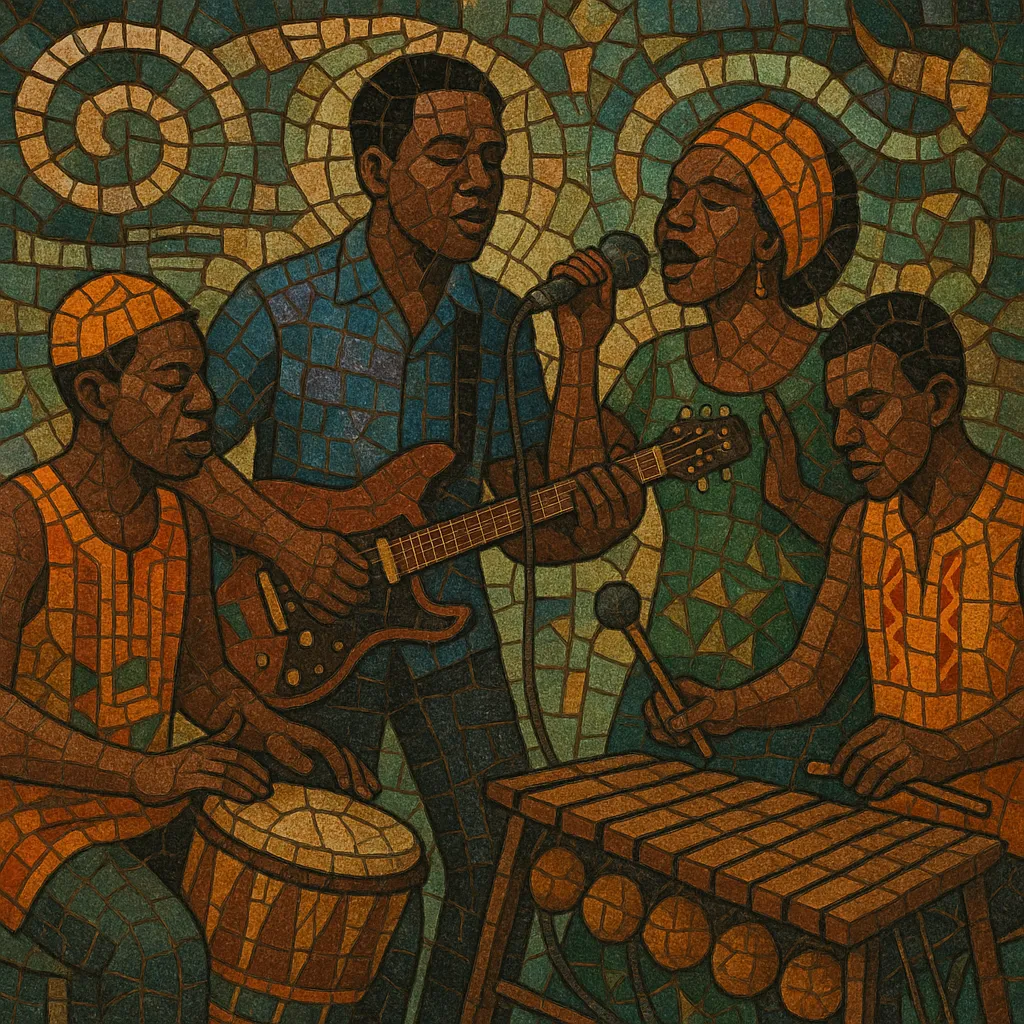
Tradi-moderne ivoirien is a popular music style from Côte d'Ivoire that modernizes local traditional repertoires by arranging them with electric instruments and studio production while keeping indigenous rhythms, languages, and call-and-response vocals at the center.
Typical arrangements blend hand percussion (ahoko shakers, talking drums, frame drums), balafon, and traditional dance grooves (Baoulé, Bété, Gouro, Agni/Akan, Sénoufo, and others) with electric guitar, bass, keyboards/synths, drum machines, and horn sections. Melodies often lean on pentatonic or modal phrases, and lyrics mix Ivorian languages and French to deliver praise-singing, moral tales, social commentary, and celebratory themes.
The result is a danceable, community-oriented sound that bridges village ensembles and urban nightlife, simultaneously preserving heritage and embracing modern pop aesthetics.
Tradi-moderne ivoirien emerged as urban bands, studio arrangers, and state/municipal cultural circuits in Côte d'Ivoire began adapting local traditional repertoires to electric instruments. Pioneering performers and bandleaders—often rooted in village ensembles and community ceremonies—brought Baoulé, Bété, Gouro, Agni/Akan, Sénoufo, and Mandé rhythmic vocabularies into Abidjan’s studios and dancehalls. Early recordings used guitar-led dance band formats, drawing on the broader West African dance-band lineage while keeping indigenous percussion and call-and-response intact.
During the 1980s, the style crystallized on vinyl and cassettes. Affordable synths and drum machines joined balafon and ahoko, creating a distinctly Ivorian timbral blend. Influences from highlife, Congolese rumba/soukous, and pan-African pop interacted with local meters, yielding songs that felt both modern and deeply rooted. Radio/TV exposure and touring circuits helped popularize key voices who became cultural touchstones, and Paris–Abidjan connections amplified the music’s reach.
In the 1990s, new Ivorian currents (such as zouglou and later coupé-décalé) rose to prominence, yet tradi-moderne remained active in regional circuits, ceremonies, and heritage programming. Notably, artists continued to modernize specific ethnic repertoires (e.g., Baoulé or Bété) while collaborating with funk, zouk, and global pop producers. From the 2000s onward, reissues and international tours introduced classic albums to broader audiences, and a new generation of Ivorian musicians integrated tradi-moderne aesthetics into contemporary “world” and Afro-pop frameworks, preserving its role as a living bridge between tradition and modernity.

